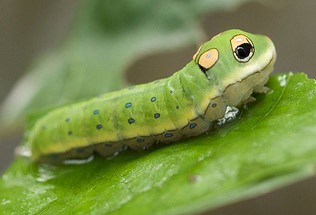

These butterflies have stripes like zebras, and tailed wings, like swallows with red and blue spots on the lower back. The Zebra Swallowtail ( Eurytides marcellus) is Tennessee's state butterfly and is found throughout the eastern U.S. Sport Fish, Tartan, Theatre, Tree, US Bicentennial March Song, US Bicentennial Song, Wild Animal, Wildflower (Passion), Wildflower (Echinacea) ILRiverHort is a blog that helps people connect to nature and grow.Agricultural Insect, Ambassador of Letters, Amphibian, Artist-in-Residence-2001, Aviation Hall of Fame, Beverage, Bicentennial Poem, Bicentennial Rap Song, Bicentennial School Song, Bicentennial Tree, Bird, Butterfly, Commercial Fish, Cultivated Flower, Distinguished Service Medal, Evergreen Tree, Fine Art, Flag, Flag of the Governor, Folk Dance, Fossil, Fruit, Game Bird, Gem, Historian ( Durhamn ), Historian (Dykeman), Horse, Insect (Firefly), Insect (Ladybug), Jamboree and Crafts Festival, Language, Mineral, Motto, Nicknames, Painting (Tn Treasures,) Painting (Tn Treasures Too,) Pets, Poem, Poet Laureate, Public School Song, Quarter, Railroad Museum (Tennessee Valley,) Reptile, Rock, Seal, Slogan, Song ( My Homeland Tennessee,) Song ( When It's Iris Time in Tennessee), Song ( Tennessee Waltz), Song ( Rocky Top), Song ( Tennessee), Song ( The Pride of Tennessee), Sport Fish (obsolete), She continues to share her passion for horticulture related topics as “Retro Rhonda” on social media.
#Zebra swallowtail larva how to
She focused on high quality, impactful programs that taught homeowners how to create energy-efficient landscapes using sustainable practices that increase property values and help the environment.Īfter 30 years with University of Illinois Extension, Rhonda retired in 2018. Butterfly gardening is very rewarding.Īs horticulture educator, Rhonda Ferree inspired citizens in local communities to grow their own food and improve their home landscapes. Plant your own butterfly garden this summer. Although adult butterflies feed on many different types of nectar, their larvae need specific (and often) native plants in order to survive. Many insects feed on the native plants they evolved with over time. Butterflies are insects and are susceptible to most insecticides. The house covers 2,600 square feet and is filled with larval and nectar plants.įinally, reduce pesticide use and use more native plants. The house showcases native Illinois butterflies using a modest structure of metal hoops covered with netting. I also encourage you to visit the Kim St John Butterfly Habitat at Wildlife Prairie Park. This beautiful book contains descriptions, field photos, and life-size specimen photos of all Illinois' butterfly species. To learn more, I recommend the new Butterflies of Illinois: A Field Guide by Michael Jeffords, Susan Post, and James Wiker. I've started using common violet more in my landscape in hopes of seeing more fritillary butterflies in my neighborhood. The common violet is our state flower and is very beautiful in bloom. Most fritillaries feed as larvae on violets, and some also on passion vine. Finally spicebush swallowtail caterpillars eat spicebush and sassafras.įritillary butterflies are one of my favorite. Tiger swallowtail larval hosts include wild black cherry, tulip poplar tree, as well as apple, maple, ash, and others. If you see giant swallowtails, there must be a source of wafer ash or prickly ash nearby. Black swallowtail females lay eggs on plants in the carrot family for their larvae to eat, including dill, parsley, carrot, parsnip, and other natives in that plant family.

The pipevine swallowtail young feed on pipevine plant, while the zebra swallowtail larvae feed on pawpaw trees.

In addition to planting milkweed for monarch butterflies, here are some other examples to try. However, butterfly larvae are picky eaters and most need a specific type of plant in order to survive. It is hard for many people to allow a critter to eat up their garden plants. With these plants you are feeding the caterpillars that eventually turn into adult butterflies. Providing larval food plants is where butterfly gardening diverts from all other types of gardening. Nectar sources attract the adult butterfly and many different types of flowers will serve as a nectar source. There are two different types of plants you can grow for butterflies: nectar food sources and larval food sources. Written by Rhonda Ferree, retired horticulture educatorĮfforts to save the monarch butterfly are everywhere with many people pledging to plant milkweed for monarch larvae to eat.


 0 kommentar(er)
0 kommentar(er)
